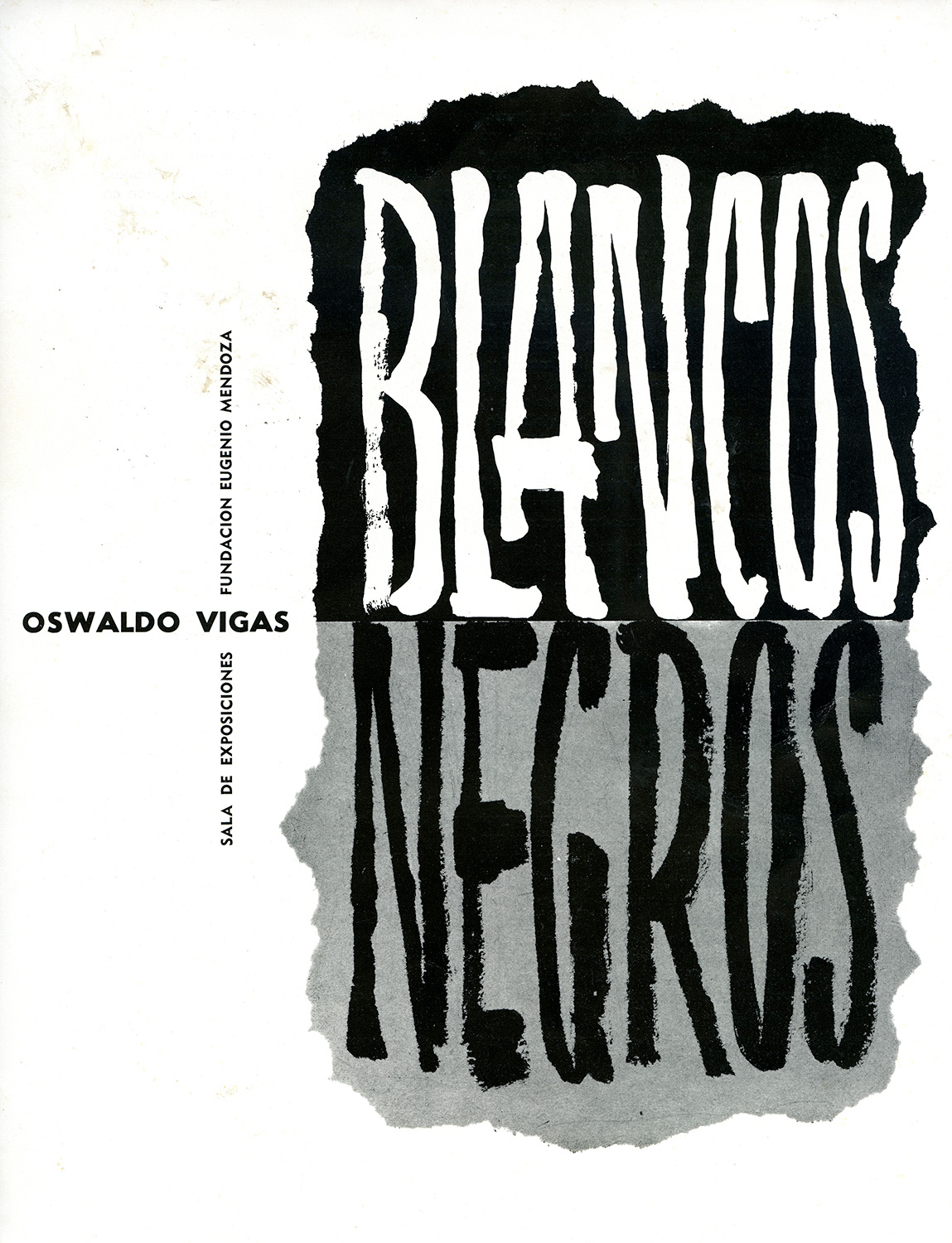Oswaldo Vigas. Blancos y Negros
Eugenio Mendoza Foundation Exhibition Room, Caracas
September 19 to October 5, 1958
Manuel Quintina Castilla
“Integral” Magazine, No. 9. November 1957, Caracas, Venezuela (Excerpts)
The trace does not admit ambiguities and is always revealing the degree of the artist’s sensitivity and true personal quality. The more secure the trace is, the more explicit the forms established by it will be. Oswaldo Vigas, after the magical and telluric content of his well-known brujas (where the gorge, gnarled and aggressive lines, the cut arches and the open outer forms predominate, which became related in some way to André Marchand’s early work), has sacrificed the great encounter that this painting meant to him, to deal with other problems that his concerns as an artist and as a young man imposed him. Many would have wished that Vigas continued painting brujas or that he continued on this path, but we must also understand that the path of the brujas found its culmination in themselves and therefore stopped offering interest as a creation, as a discovery, from the moment that the painter decided to move forward. He decided to move forward because Oswaldo Vigas’ current painting is an immediate derivation of the brujas, and some of their plastic characteristics that are nothing but the “hand” and personality of the artist still remain. W. Worringer, in his famous work Abstraction and Empathy says: “the work of art is an autonomous organism that stands besides nature on equal terms and in its deepest and innermost essence, devoid of any connection with it, insofar as man understands ‘nature’ to be the visible surface of things.
The dangerous no-color violently invades Vigas’ painting and crosses it with strong signs of a dark calligraphy. The figure closes itself, it cedes and becomes soberer: the Objeto Negro, Objeto Cerrado and Objeto Mágico (1955) come out. Vigas is interested in the lesson of Eastern philosophies. He wants to see in the pure, expressive and limiting black trace, what Van Gogh and Picasso took to an unknown degree of tearing and audacity.
In short, what Vigas is really interested in, above all things, is in finding his freedom and a path that gives him the possibility to experiment the resources he has as a painter, the possibility to carry out his ideas widely and without obstacles.
José Gómez Sicre
Chief, Visual Arts Division. Pan American Union.
A revival in the drawing as an absolute and primary means of artistic expression has led to a good core of contemporary painters to the use of the monochrome -especially the black and the white- in the substances of their choice. In this way, East and West have been reunited in art, as it happened centuries before with movements that are already surpassed.
This new direction could not go unnoticed by Oswaldo Vigas, a vigilant and restless painter full of imagination and inventiveness. First in solid, compact and full of suggestions drawings, and later in oils of delightful execution, he has been shaping his refined sense of order to group his forms, no matter if they are free interpretations of an imaginary and brutal flora. In these Vigas works, the black and the white merge without confusion: they merge and remain black and white, never gray. That is, an intellectual order governs and contains what for its own tropical nature could lean towards the more hermetic labyrinths of a tropical baroque.


